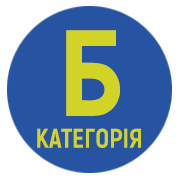DIFFERENTIATION AND INTEGRATION OF THE LEARNING OF NATURAL DISCIPLINES ARE TWO SIDES OF THE SINGLE EDUCATIONAL PROCESS
DOI:
https://doi.org/10.32782/cusu-pmtp-2023-1-7Keywords:
differentiation, integration, natural sciences, STEM, project activity, unified scientific picture of the world.Abstract
The development of society determines the formation of such a paradigm of education, which involves the transition to fundamentally new systems of education. Modern education is developing in directions that combine diametrically opposed approaches. This is exactly what happens with science education, which is essentially integrative. On the other hand, learning students with a wide range of abilities requires teachers to come up with innovative ideas and take into account the peculiarities of student development. The problem of combining differentiation and integration in natural education is being updated. The purpose of the article is to highlight the features of the complex implementation of differentiated and integrative approaches in the teaching of natural sciences as the basis of the modern educational environment of a secondary school. The article analyzes the approaches of Ukrainian and foreign researchers who studied the ideas of differentiation and integration and the peculiarities of their implementation in education. We defined the theory of multiple intelligences as a conceptual basis for combining two opposite approaches. According to this theory, individual features of the student’s intellectual development should be taken into account in education. On the other hand, the integration of different modalities and disciplines can accommodate the different ways of knowing and understanding possessed by students with different types of intelligence. The main task of natural sciences is the formation of integral scientific knowledge, ideas about a unified scientific picture of the world. The article shows that science combines differentiation and integration: the unity and integrity of the world, as well as its diversity, the specificity of various forms of matter. Based on the results of the conducted research, we singled out STEM education and project learning technologies as means of implementing differentiated and integrative approaches in the learning of natural sciences. The issue of training teachers capable of implementing these ideas in the conditions of a STEM-oriented educational environment remains problematic.
References
Дидактичні засади диференціації навчання в основній школі : монографія / В.І. Кизенко, Г.О. Васьківська, С.П. Бондар Київ : Педагогічна думка, 2012. 216 с.
Сікорський П.І. Теорія і методика диференційованого навчання. Львів : Сполом, 2000. 421 с.
Савченко О.Я. Диференціація навчання на всіх етапах уроку. Сучасний урок у початкових класах. Київ, 1997. С. 39–57.
National curriculum in England: science programmes of study. URL: https://www.gov.uk/government/ publications/national-curriculum-in-england-science-programmes-of-study.
Tomlinson C.A. Differentiation of Instruction in the Elementary Grades. ERIC Digest. ERIC Clearinghouse on Elementary and Early Childhood Education. August, 2000. URL: https://files.eric.ed.gov/ fulltext/ED443572.pdf.
Gardner H. Frames of Mind: The Theory of Multiple Intelligences. Basic Books. 2011. 528 p.
Сальник І.В. Диференціація навчання фізики – шлях до успіху кожного учня. Диференціація у шкільній освіті: історичний досвід і сучасні технології : матеріали Всеукраїнської науково-практичної конференції, м. Київ, 16 травня, 2018 р. Київ : Інститут педагогіки, 2018. С. 191–196.
Ляшенко О.І. Інтеграція і диференціація – два вектори сучасного освітнього процесу. Компетентнісно орієнтоване навчання: виклики та перспективи : збірник матеріалів ІІ Всеукраїнської науково- практичної інтернет-конференції, м. Київ, 5 березня, 2020 р., Київ : Інститут педагогіки, 2020. С. 88–90.
Іванчук М.Г. Психолого-педагогічні основи виховання особистості молодшого школяра в умовах інтегрованого підходу до навчання : дис. ... докт. психол. наук : 19.00.07. Київ, 2005. 473 с.
Використання платформи ARDUINO у підготовці вчителів фізики до STEM орієнтованого навчання / І.В. Сальник, Д.В. Соменко, Е.П. Сірик. Інформаційні технології і засоби навчання. 2023. Том 95. № 3. С. 124–142. URL: https://doi.org/10.33407/itlt.v95i3.5155.
Використання інтерактивних технологій у STEAM-освіті: переваги та виклики / Н.А. Шакун, О.В. Зівенко, І.В. Сальник. Вісник науки та освіти. 2023. № 6 (12). С. 646–656. URL: https://doi. org/10.52058/2786-6165-2023-6(12)-646-656.
Іванченко Є.А. Сутність і структура поняття «інтеграція». Педагогічні науки. 2009. № 1 (52). С. 288–296.
Козловська І.М. Теоретичні та методичні основи інтеграції знань учнів професійно-технічної школи : дис. ... докт. пед. наук : 13.00.04. Київ, 2001. 464 с.
Туриця О. Інтеграція та диференціація знань студентів у процесі вивчення хімічних і технологічних дисциплін. Вісник Львівського університету. Серія педагогічна. 2012. Вип. 28. С. 65–73.








